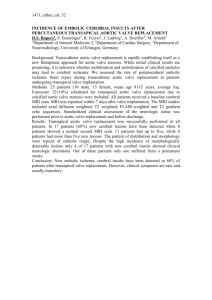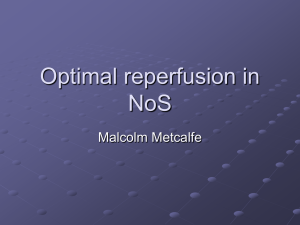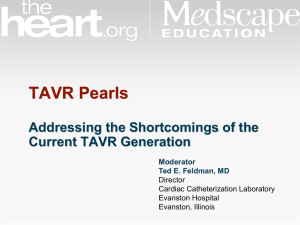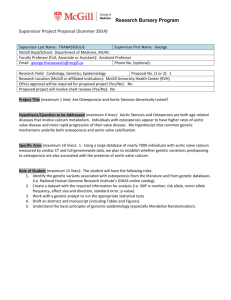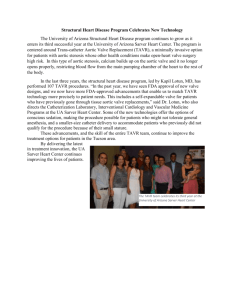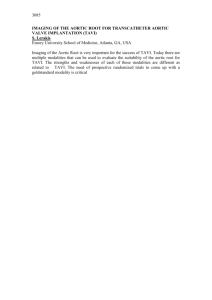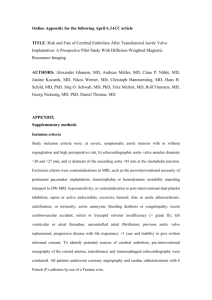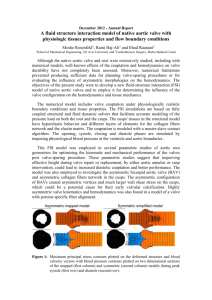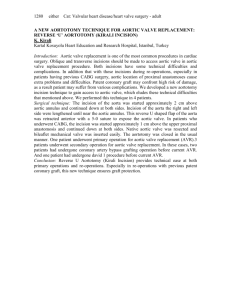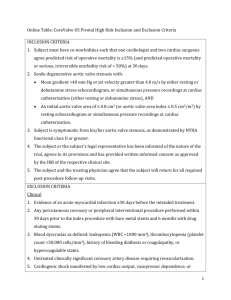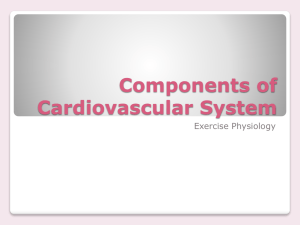transapical transcatheter aortic valve implantation
advertisement
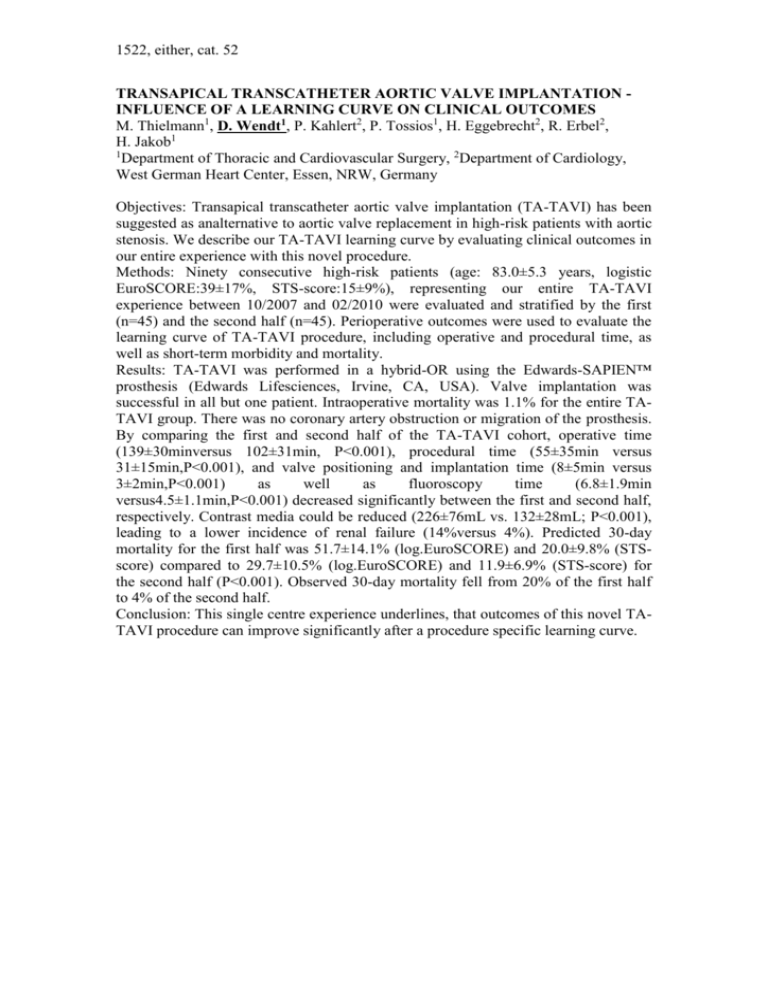
1522, either, cat. 52 TRANSAPICAL TRANSCATHETER AORTIC VALVE IMPLANTATION INFLUENCE OF A LEARNING CURVE ON CLINICAL OUTCOMES M. Thielmann1, D. Wendt1, P. Kahlert2, P. Tossios1, H. Eggebrecht2, R. Erbel2, H. Jakob1 1 Department of Thoracic and Cardiovascular Surgery, 2Department of Cardiology, West German Heart Center, Essen, NRW, Germany Objectives: Transapical transcatheter aortic valve implantation (TA-TAVI) has been suggested as analternative to aortic valve replacement in high-risk patients with aortic stenosis. We describe our TA-TAVI learning curve by evaluating clinical outcomes in our entire experience with this novel procedure. Methods: Ninety consecutive high-risk patients (age: 83.0±5.3 years, logistic EuroSCORE:39±17%, STS-score:15±9%), representing our entire TA-TAVI experience between 10/2007 and 02/2010 were evaluated and stratified by the first (n=45) and the second half (n=45). Perioperative outcomes were used to evaluate the learning curve of TA-TAVI procedure, including operative and procedural time, as well as short-term morbidity and mortality. Results: TA-TAVI was performed in a hybrid-OR using the Edwards-SAPIEN™ prosthesis (Edwards Lifesciences, Irvine, CA, USA). Valve implantation was successful in all but one patient. Intraoperative mortality was 1.1% for the entire TATAVI group. There was no coronary artery obstruction or migration of the prosthesis. By comparing the first and second half of the TA-TAVI cohort, operative time (139±30minversus 102±31min, P<0.001), procedural time (55±35min versus 31±15min,P<0.001), and valve positioning and implantation time (8±5min versus 3±2min,P<0.001) as well as fluoroscopy time (6.8±1.9min versus4.5±1.1min,P<0.001) decreased significantly between the first and second half, respectively. Contrast media could be reduced (226±76mL vs. 132±28mL; P<0.001), leading to a lower incidence of renal failure (14%versus 4%). Predicted 30-day mortality for the first half was 51.7±14.1% (log.EuroSCORE) and 20.0±9.8% (STSscore) compared to 29.7±10.5% (log.EuroSCORE) and 11.9±6.9% (STS-score) for the second half (P<0.001). Observed 30-day mortality fell from 20% of the first half to 4% of the second half. Conclusion: This single centre experience underlines, that outcomes of this novel TATAVI procedure can improve significantly after a procedure specific learning curve.
